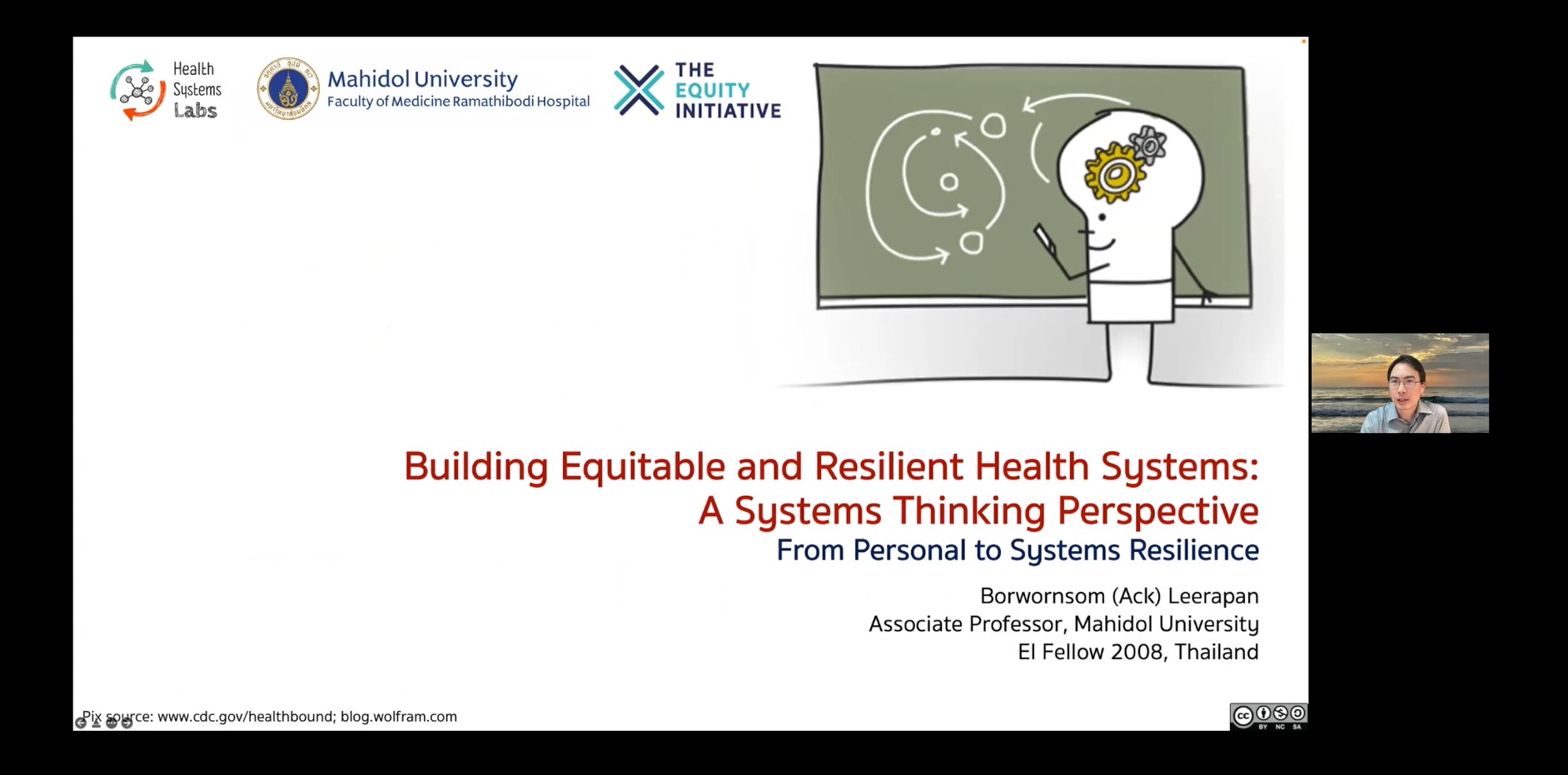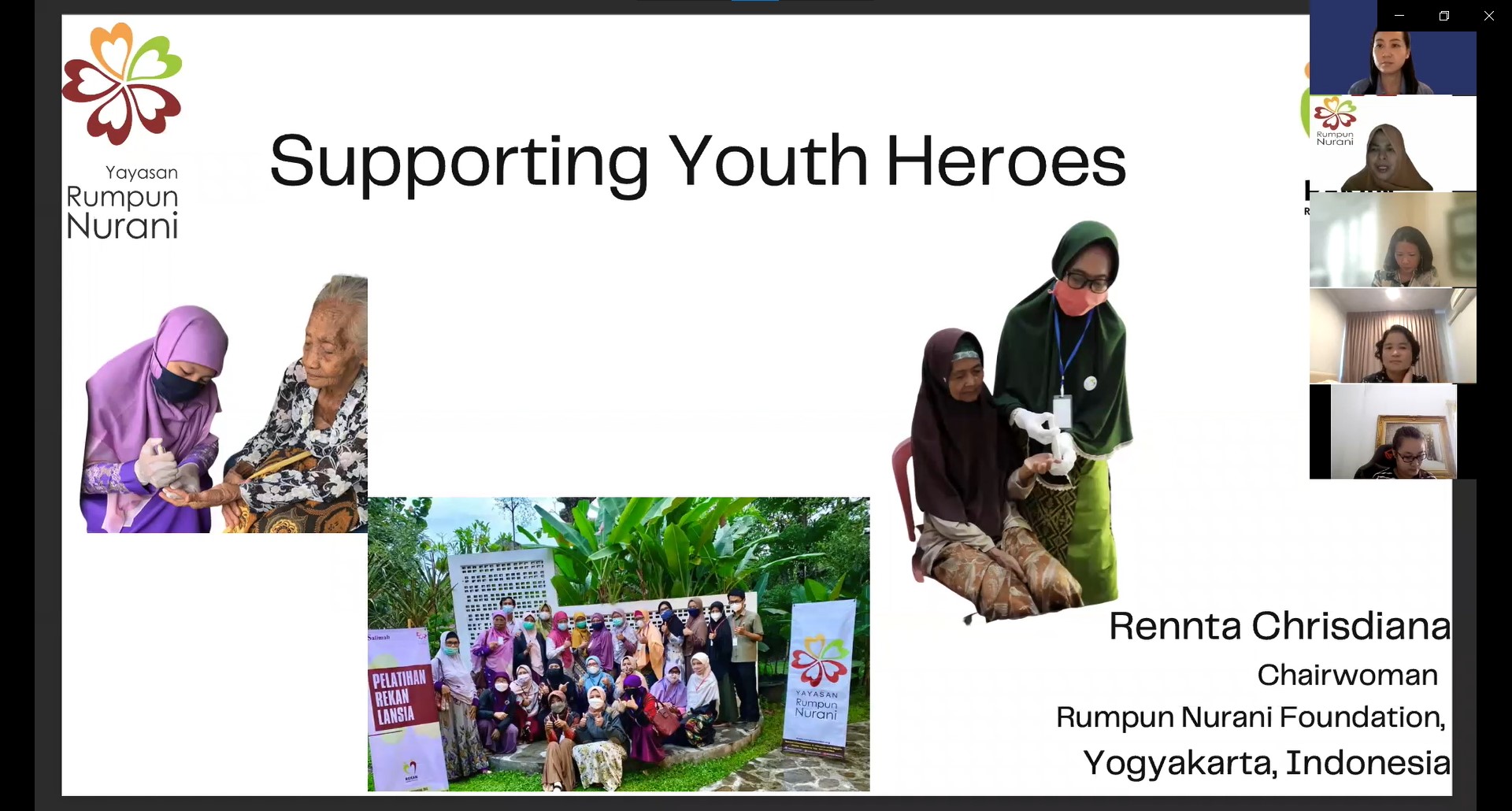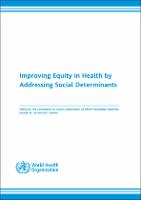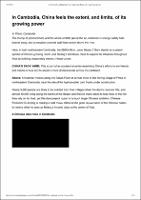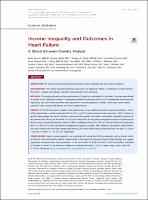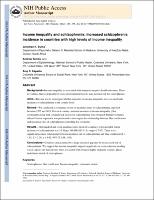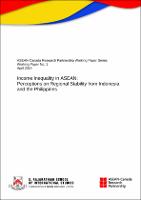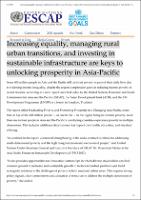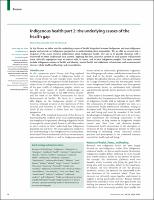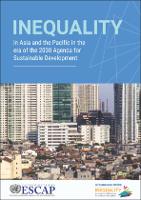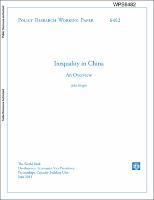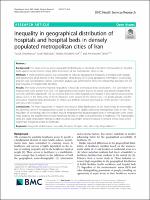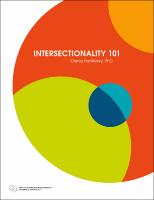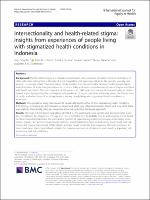Browsing by Title
Now showing items 146-165 of 299
-
Ideation Caravan by Borwornsom Leerapan (Cohort 2018)
(The Equity Initiative, 2022-01-23)
Building Equitable and Resilient Health Systems: A Systems Thinking Perspective From Personal to Systems Resilience -
Ideation Caravan By Pham Kieu Oanh (Cohort 2016)
(The Equity Initiative, 2022-01-23) -
Ideation Caravan by Rennta (Cohort 2019)
(The Equity Initiative, 2022-01-23)
REKAN (Community Health Volunteers) for Elderly Innitiative Capacity Building for Community Health Volunters to Promote Well-Being for the Elderly During COVID-19 Pandemic in Yogyakarta, Indonesia. -
Improving equity in health by addressing social determinants
(World Health Organization, 2011)
This recently published book highlights actions to improve health equity based on findings from the nine global Knowledge Networks that were established during the WHO Commission on Social Determinants of Health. Their task was to synthesize existing evidence and identify effective and appropriate actions to improve health equity in nine thematic areas: - globalization; - gender; - social exclusion; - early child development; - urban settings; - employment conditions; - health systems; - public health programs; and - measurement and evidence. ... -
Improving Insurance Protection for Rare Diseases: Economic Burden and Policy Effects — Simulation of People With Pompe Disease in China
(2022-10-24)
Background: The economic burden of Pompe disease (PD) is under-researched. This study aimed to fill this gap and provide evidence-based suggestions for policy improvement based on policy simulation. Methods: Data were derived from a nationally based cross-sectional survey on rare diseases in early 2018. Answers from 92 PD patients were used for data analysis and simulation. Catastrophic health expenditure (CHE) and impoverishment due to illness (IDI) were adopted to measure PD patients’ economic burden. Two typical reimbursement patterns, a ... -
Improving mental health literacy using web- or app-based interventions: A scoping review
(2024-04-05)
Background: Given the rapid advancement in technology, the Internet has grown to play a significant role in the field of healthcare. Individuals can now access a profusion of easily available materials for self-management of their health. The purpose of this review is to describe Web/App-based interventions that are primarily or secondarily designed to improve mental health literacy (MHL) and to investigate the effectiveness of online interventions for improving mental health. Materials and Method: A scoping review was conducted by searching ... -
In Cambodia, China feels the extent, and limits, of its growing power
(Washington post, 2015) -
Income Inequality and Outcomes in Heart Failure
(2019)
OBJECTIVES This study examined the relationship between income inequality and heart failure outcomes. BACKGROUND The income inequality hypothesis postulates that population health is influenced by income distribution within a society, with greater inequality associated with worse outcomes. METHODS This study analyzed heart failure outcomes in 2 large trials conducted in 54 countries. Countries were divided by tertiles of Gini coefficients (where 0% represented absolute income equality and 100% represented absolute income inequality), and heart ... -
Income inequality and schizophrenia: Increased schizophrenia incidence in countries with high levels of income inequality
(2014-03)
Background—Income inequality is associated with numerous negative health outcomes. There is evidence that ecological level socio-environmental factors may increase risk for schizophrenia. Aims—The aim was to investigate whether measures of income inequality are associated with incidence of schizophrenia at the country level. Method—We conducted a systematic review of incidence rates for schizophrenia, reported between 1975 and 2011. For each country, national measures of income inequality (Gini coefficient) along with covariate risk factors for ... -
Income Inequality in ASEAN: Perceptions on Regional Stability from Indonesia and the Philippines
Income inequality has been a growing concern since Global Financial Crisis. But how do regional institutions contribute to the debate on income equality? ASEAN’s normative framework is underpinned by the principle of non-interference while ASEAN has a mandate to establish an equitable economic community post 2015. This study examines if regional income inequality is considered a regional problem, and if so, is the concern significant enough to overcome the principle of non-interference allowing ASEAN to play a greater role in policy formation. ... -
Indigenous health part 2: the underlying causes of the health gap
(The Lancet, 2009) -
Inequality in Asia and the Pacific in the era of the 2030 Agenda for Sustainable Development
(United Nations, 2018)
This publication reviews the region's inequality trends, challenges and achievements and identifies policy gaps across the three dimensions of inequality--inequality of outcome, inequality of opportunity and inequality of impact. It also discusses the potential impact of rapid and disruptive technological advances, such as machine learning, and puts forward a broad set of policy recommendations for reducing all forms of inequality for the effective implementation of the 2030 Agenda for Sustainable Development and its core tenant of "leaving no ... -
Inequality in China
(Oxford University Press, 2014-10-30)
This paper provides an overview of research on income inequality in China over the period of economic reform. It presents the results of two main sources of evidence on income inequality and, assisted by various decompositions, explains the reasons income inequality has increased rapidly and the Gini coefficient is now almost 0.5. This paper evaluates the degree of income inequality from the perspectives of people’s subjective well-being and government concerns. It poses the following question: has income inequality peaked? It also discusses the ... -
Inequality in geographical distribution of hospitals and hospital beds in densely populated metropolitan cities of Iran
(BMC Health Serv Res, 2019-12)
Background: This study aims to assess geographical distribution of hospitals and extent of inequalities in hospital beds against socioeconomic status (SES) of residents of five metropolitan cities in Iran. Methods: A cross-sectional analysis was conducted to measure geographical inequality in hospital and hospital bed distributions of 68 districts in five metropolitan cities during 2016 using geographic information system (GIS), and Gini and Concentration indices. Correlation analysis was performed to show the relationship between the SES and ... -
Informal workers and access to healthcare: a qualitative study of facilitators and barriers to accessing healthcare for beer promoters in the Lao People’s Democratic Republic
(2016-04-18)
Background: Informal workers often face considerable risks and vulnerabilities as a consequence of their work and employment conditions. The purpose of this study was to examine the interplay between the experience of informal work and access to health, using as an example, female beer promoters employed in the informal economy, in the Lao People’s Democratic Republic. Methods: In-depth interviews were undertaken with 24 female beer promoters working in beer shops, restaurants and entertainment venues in Vientiane City. The recruitment strategy ... -
International Trade Agreements and Impact on the Medicine System: Causal Relations?
(2020-01-27)
This article comprehensively reviews and analyses knowledge and information relating to international trade agreements and their implications during the past 17 years, both within and external to Thailand. To reveal the implications and impact systematically, the conceptual framework for analysis was drafted and the implications were mapped along the medicine value chain. The mapping shows cross-link of the implications and took concerns of health sectors. Focusing on medicines, despite of positive impact, international trade agreements have had ... -
INTERSECTIONALITY 101
(Institute for Intersectionality Research and Policy)
Interest in and applications of intersectionality have grown exponentially in popularity over the last 15 years. Scholars across the globe from a variety of disciplines, including sociology, political science, health sciences, geography, philosophy and anthropology, as well as in feminist studies, ethnic studies, queer studies and legal studies, have drawn on intersectionality to challenge inequities and promote social justice. This practice has also extended to policy makers, human rights activists and community organizers search - ing ... -
Intersectionality and health-related stigma: insights from experiences of people living with stigmatized health conditions in Indonesia
(International Journal for Equity in Health, 2020-12)
Abstract Background Health-related stigma is a complex phenomenon, the experience of which intersects with those of other adversities arising from a diversity of social inequalities and oppressive identities like gender, sexuality, and poverty – a concept called “intersectionality”. Understanding this intersectionality between health-related stigma and other forms of social marginalization can provide a fuller and more comprehensive picture of stigma associated with health conditions. The main objective ...

